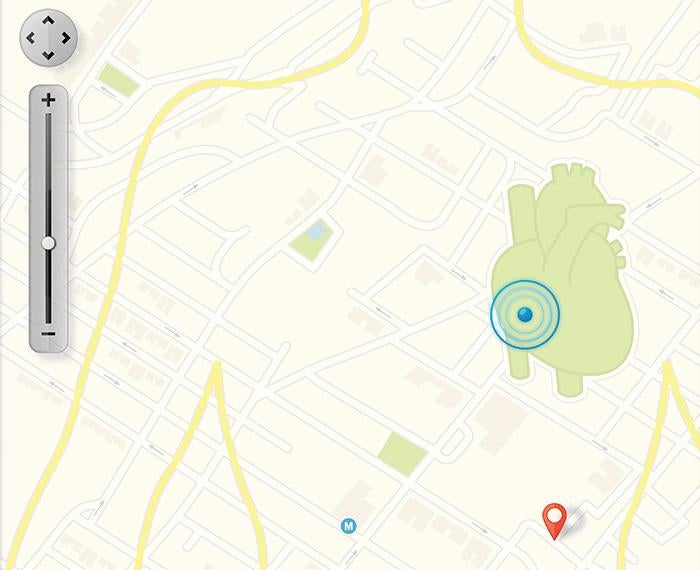
Subscribe to Pittwire Today
Get the most interesting and important stories from the University of Pittsburgh.Pitt researchers are leading the way toward a Google Maps of cells

Getting from point A to point B has never been easier thanks to digital maps on our smartphones. With the swipe of a finger, we can plan a route to the grocery store, scope out a hiking trail or pick a perfect vacation destination. Soon, biomedical researchers will have a similar tool to easily navigate the vast network of cells in the human body.
The Human BioMolecular Atlas Program, or HuBMAP, is an international consortium of researchers with a shared goal of developing a global atlas of healthy cells in the human body. Once completed, the resource will be made freely available to drug developers and clinical researchers who could use it to shape the development of specialized medical treatments.
The idea behind HuBMAP is akin to the National Institutes of Health’s Human Genome Project, which sequenced every single gene in the human body. Completed almost 20 years ago, the massive undertaking kickstarted a renaissance in clinical research and laid the groundwork for innovative approaches to gene-based therapies. But instead of collecting genetic information on the whole organism level, HuBMAP goes deeper with the goal of mapping gene expression, proteins, metabolites and other information in different types of cells across various organs and tissues.
The next step of turning this vast wealth of data into a user-friendly tool is managed by bioinformaticians at the University of Pittsburgh, the Pittsburgh Supercomputing Center (PSC), Carnegie Mellon University and Stanford University. The teams recently received $20 million in renewed funding from the NIH to continue these efforts.
“Creating an ecosystem that can connect all the different pieces of data into a single large knowledge resource is a tough job, but that’s what this team has special expertise in. We are good at integrating all kinds of various pieces of software and making them run,” said co-lead of the Pittsburgh HuBMAP Infrastructure and Engagement Component Jonathan Silverstein, a professor in the Department of Biomedical Informatics at Pitt.
The team, led by Silverstein, who is also a chief research informatics officer at Pitt and UPMC’s Institute for Precision Medicine, and PSC’s Scientific Director Phil Blood, will embark on a long journey of annotating vast amounts of molecular-level data from thousands of tissue samples collected in over 60 institutions across the country. A locally maintained and developed hybrid cloud infrastructure for data integration and software development is being used to mold the resulting library of genetic and protein signatures of healthy cells into a comprehensive map.
The HuBMAP Computational Tools Component, led by Matthew Ruffalo of Carnegie Mellon’s Computational Biology Department, has developed computational pipelines for processing these molecular datasets, allowing for efficient data integration across data types, tissues and more.
The team is also involved in projects aimed at creating an atlas of aging and senescent cells (SenNet) and building a framework for studying molecular markers of breast cancer.
“In addition to research, the HuBMAP and SenNet consortia are really helping to shape the ecosystem and the culture around projects that this work will impact,” said Kay Metis, SenNet program manager at Pitt. “This project has the potential to impact Alzheimer’s and aging research and make a big difference to the direction of medical research going forward. I love being part of the effort to contribute to the social impact of what a project of this scale can accomplish.”
The expertise in molecular biology and clinical data, combined with experience in managing research consortiums and deep knowledge of software integration, along with computing resources provided by the PSC, makes Pittsburgh uniquely capable of handling a complex task such as HuBMAP.
“I came to Pitt because it is a place with great depth of interest and scientific expertise and people here are open to building collaborations, not only across Pittsburgh but worldwide. We have created a team that is unbounded not only on the clinical and biological data side, but also on the technology side,” Silverstein said.
— Ana Gorelova, image by Getty

